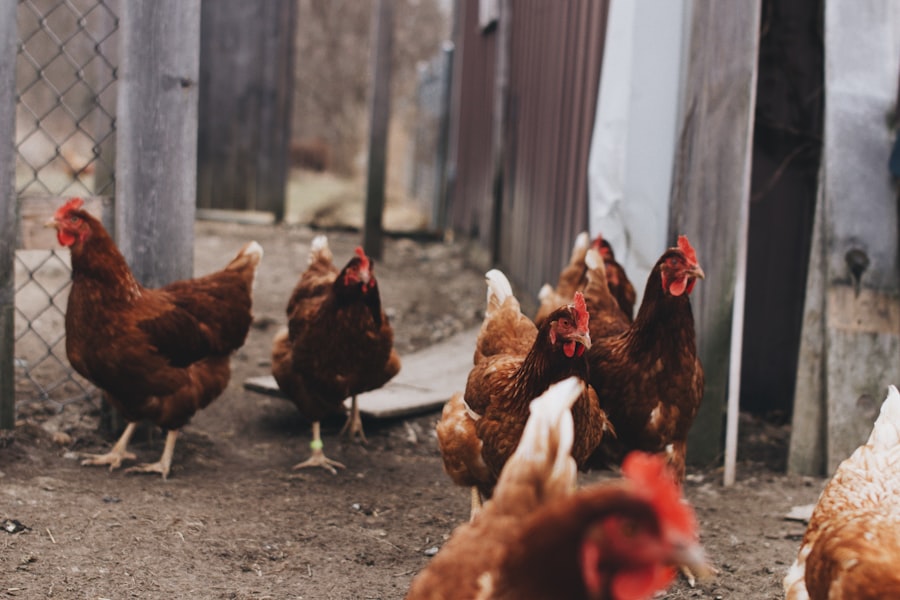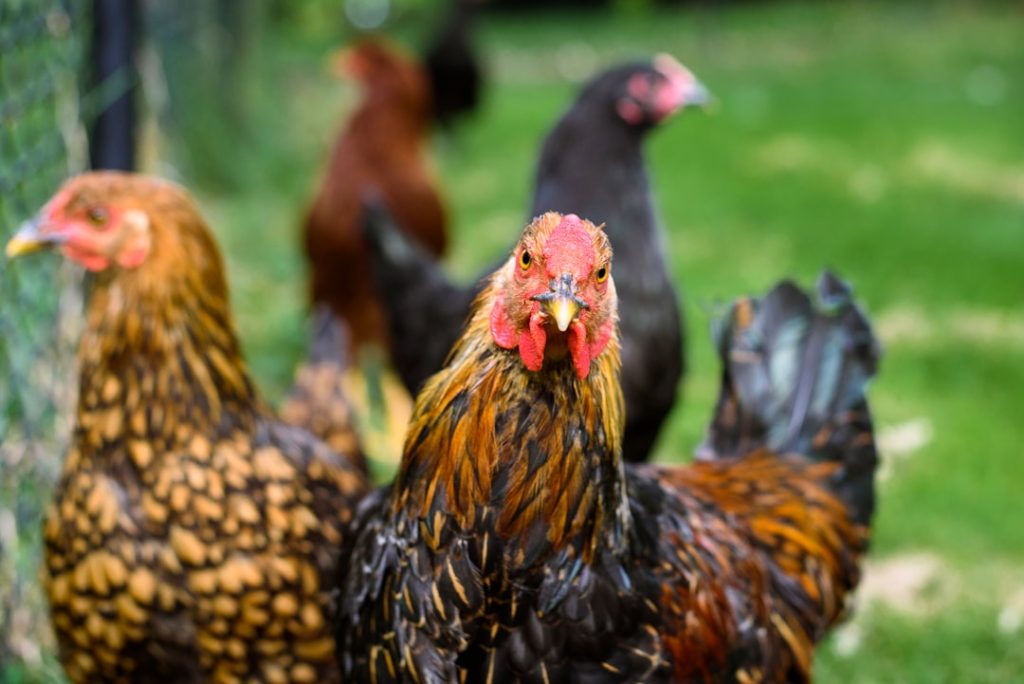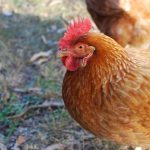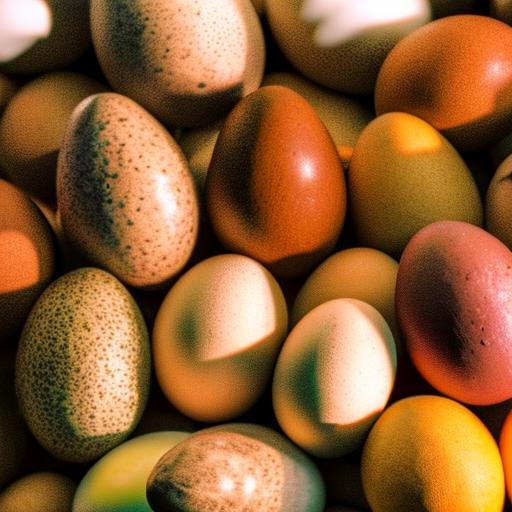Selective breeding in chickens has a rich history spanning thousands of years. The domestication of chickens from their wild ancestor, the red junglefowl, occurred in Southeast Asia approximately 8,000 years ago. Since then, humans have engaged in selective breeding to enhance various traits, including egg production, meat quality, and appearance.
Ancient civilizations such as the Romans and Greeks practiced chicken breeding for specific purposes, and this practice continued to evolve throughout the Middle Ages and into modern times. The 19th century marked a significant shift in selective breeding practices, as scientific understanding of genetics advanced. Influential figures like Charles Darwin and Gregor Mendel contributed to the field by studying inheritance patterns and genetic variation principles.
This scientific progress led to the development of specialized chicken breeds for specific purposes, such as broilers for meat production and layers for egg production. In contemporary poultry farming, selective breeding remains crucial, with breeders utilizing advanced genetic techniques to improve traits like disease resistance, feed efficiency, and overall productivity.
Table of Contents
- 1 The Benefits of Selective Breeding for Chicken Farmers
- 2 The Process of Selective Breeding in Chickens
- 3 Selecting Traits for Breeding in Chickens
- 4 The Impact of Selective Breeding on Chicken Health and Welfare
- 5 Challenges and Ethical Considerations of Selective Breeding in Chickens
- 6 The Future of Selective Breeding in Chicken Farming
- 7 FAQs
- 7.1 What is selective breeding in chickens?
- 7.2 How is selective breeding carried out in chickens?
- 7.3 What are some common traits that are selectively bred in chickens?
- 7.4 What are the benefits of selective breeding in chickens?
- 7.5 Are there any potential drawbacks or concerns with selective breeding in chickens?
- 7.6 Is selective breeding in chickens different from genetic modification?
Key Takeaways
- Selective breeding in chickens has been practiced for centuries, leading to the development of various breeds with specific traits and characteristics.
- Chicken farmers benefit from selective breeding by being able to produce chickens with desirable traits such as high egg production, fast growth, and disease resistance.
- The process of selective breeding in chickens involves carefully selecting and mating individuals with desired traits to pass on those traits to the next generation.
- Traits selected for breeding in chickens include egg production, meat quality, disease resistance, and overall health and vigor.
- Selective breeding can have both positive and negative impacts on chicken health and welfare, as it can lead to improved traits but also potential health issues related to rapid growth and high production.
The Benefits of Selective Breeding for Chicken Farmers
Improved Health and Productivity
By selectively breeding for traits such as disease resistance, feed efficiency, and growth rate, farmers can improve the overall health and productivity of their flocks. This can lead to higher profits and reduced reliance on antibiotics and other medications, ultimately benefiting both the farmers and the consumers.
Meeting Market Demands
Selective breeding allows farmers to tailor their flocks to meet market demands. For example, by breeding for specific meat or egg qualities, farmers can produce products that are more appealing to consumers and command higher prices in the marketplace. This can give farmers a competitive edge in the industry and help them stay profitable in an increasingly competitive market.
Sustainable Farming Practices
Furthermore, selective breeding can also lead to more sustainable farming practices by reducing the environmental impact of chicken production through improved efficiency and reduced waste.
The Process of Selective Breeding in Chickens

The process of selective breeding in chickens begins with the identification of desirable traits that farmers want to improve or develop in their flocks. These traits can include anything from egg production and meat quality to disease resistance and temperament. Once these traits are identified, farmers select individual birds that exhibit these traits and use them as breeding stock for the next generation.
This process is repeated over multiple generations, with each successive generation exhibiting more pronounced and consistent expression of the desired traits. In modern poultry farming, selective breeding is often aided by advanced genetic techniques such as DNA sequencing and marker-assisted selection. These tools allow breeders to identify specific genes associated with desirable traits and selectively breed birds that carry these genes.
This can greatly accelerate the breeding process and lead to more predictable outcomes in terms of trait expression. Additionally, artificial insemination is often used to ensure that specific genetic lines are maintained and propagated throughout the breeding program.
Selecting Traits for Breeding in Chickens
When selecting traits for breeding in chickens, farmers must consider a wide range of factors including market demand, environmental conditions, and overall flock health. For example, if there is a high demand for large eggs in the marketplace, farmers may choose to selectively breed for hens that lay larger eggs. Similarly, if there is a need to reduce feed costs, farmers may focus on breeding birds with improved feed efficiency and lower maintenance requirements.
In addition to economic factors, farmers must also consider the welfare of the birds when selecting traits for breeding. This includes breeding for traits that promote good health, strong immune systems, and overall well-being. For example, selecting for disease resistance can help reduce the need for antibiotics and other medications, ultimately improving the welfare of the birds and reducing the risk of disease outbreaks within the flock.
The Impact of Selective Breeding on Chicken Health and Welfare
Selective breeding has had a significant impact on the health and welfare of chickens over the years. By selectively breeding for traits such as disease resistance, feed efficiency, and overall robustness, farmers have been able to produce birds that are better equipped to handle the rigors of commercial production. This has led to improvements in overall flock health and reduced reliance on medications, ultimately benefiting the welfare of the birds.
However, there are also potential downsides to selective breeding in terms of chicken welfare. For example, intense selection for rapid growth and high egg production can lead to skeletal problems, reproductive issues, and other health problems in chickens. Additionally, some breeds may be more prone to behavioral issues or stress-related problems as a result of intense selection for specific traits.
It is important for farmers to carefully consider these factors when developing breeding programs and strive to balance trait improvement with overall bird welfare.
Challenges and Ethical Considerations of Selective Breeding in Chickens

Maintaining Genetic Diversity
Selective breeding in chickens poses several challenges, including the risk of reducing genetic diversity within chicken populations. Intense selection for specific traits can lead to a loss of genetic diversity, making flocks more susceptible to disease outbreaks and other problems.
Managing Genetic Lines and Prioritizing Bird Welfare
To address this challenge, breeders must carefully manage genetic lines and periodically introduce new genetic material into their flocks to maintain diversity. Moreover, farmers must prioritize the health and welfare of the birds above all else, avoiding extreme selection for traits that may compromise bird welfare or lead to health problems.
Transparency and Public Trust
Transparency with consumers about breeding practices and the potential impact on bird welfare is crucial for maintaining public trust and confidence in the industry. By being open and honest about their breeding programs, farmers can ensure that consumers are informed and confident in the products they buy.
The Future of Selective Breeding in Chicken Farming
The future of selective breeding in chicken farming is likely to be shaped by advances in genetic technology and a growing emphasis on sustainability and animal welfare. As new genetic tools become available, breeders will have more precise methods for identifying and selecting desirable traits in chickens. This could lead to more rapid improvements in areas such as disease resistance, feed efficiency, and overall productivity.
Furthermore, there is a growing emphasis on sustainable farming practices and animal welfare within the poultry industry. This is likely to influence future breeding programs, with a greater focus on developing birds that are better adapted to free-range or pasture-based systems. Additionally, there may be increased interest in preserving heritage breeds and maintaining genetic diversity within chicken populations to ensure long-term resilience and adaptability.
In conclusion, selective breeding has played a crucial role in shaping the modern chicken industry and will continue to be a vital tool for farmers looking to improve their flocks in the future. By carefully considering the history, benefits, process, traits selection, impact on health and welfare, challenges, ethical considerations, and future trends of selective breeding in chickens, farmers can make informed decisions about how best to utilize this powerful tool in their operations.
If you are interested in learning more about how to properly care for chickens and ducks, you may want to check out this article on choosing the right flooring for your chicken coop. This article provides valuable information on the different types of flooring options available and how to select the best one for your chickens. It’s important to provide a comfortable and safe environment for your poultry, and this article can help you do just that.
FAQs
What is selective breeding in chickens?
Selective breeding in chickens is the process of intentionally choosing and mating chickens with desirable traits, such as egg production, meat quality, or disease resistance, in order to perpetuate those traits in future generations.
How is selective breeding carried out in chickens?
Selective breeding in chickens involves carefully selecting individual chickens with the desired traits, mating them to produce offspring with those traits, and then continuing to breed successive generations with the same desirable characteristics.
What are some common traits that are selectively bred in chickens?
Common traits that are selectively bred in chickens include egg production, meat quality, growth rate, feed efficiency, disease resistance, and temperament.
What are the benefits of selective breeding in chickens?
Selective breeding in chickens can lead to improved productivity, better quality products (such as eggs and meat), increased disease resistance, and overall healthier and more robust chicken populations.
Are there any potential drawbacks or concerns with selective breeding in chickens?
Some potential concerns with selective breeding in chickens include reduced genetic diversity, increased susceptibility to certain diseases, and ethical considerations related to the welfare of the chickens.
Is selective breeding in chickens different from genetic modification?
Yes, selective breeding in chickens involves the natural process of mating chickens with desired traits to produce offspring with those traits, while genetic modification involves directly altering the genetic makeup of an organism using biotechnology.
Meet Walter, the feathered-friend fanatic of Florida! Nestled in the sunshine state, Walter struts through life with his feathered companions, clucking his way to happiness. With a coop that’s fancier than a five-star hotel, he’s the Don Juan of the chicken world. When he’s not teaching his hens to do the cha-cha, you’ll find him in a heated debate with his prized rooster, Sir Clucks-a-Lot. Walter’s poultry passion is no yolk; he’s the sunny-side-up guy you never knew you needed in your flock of friends!







